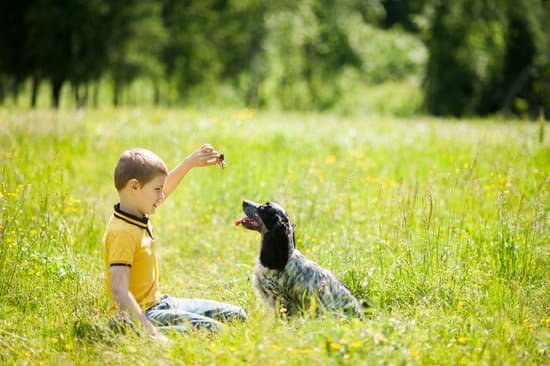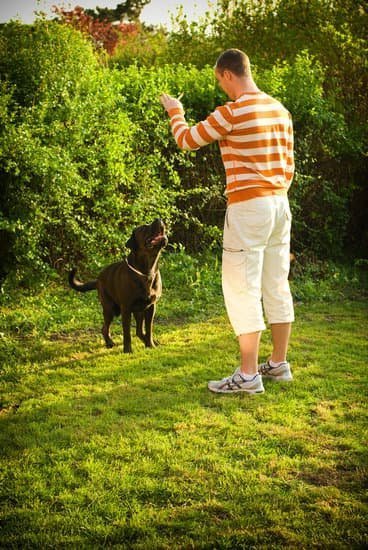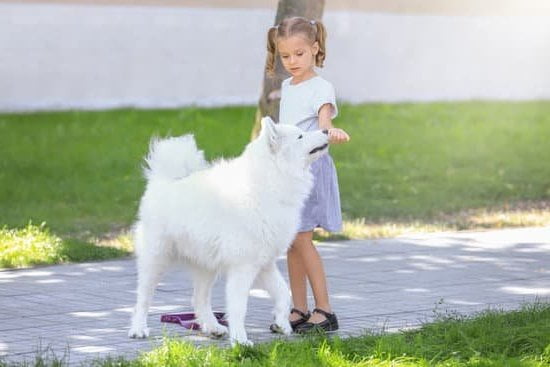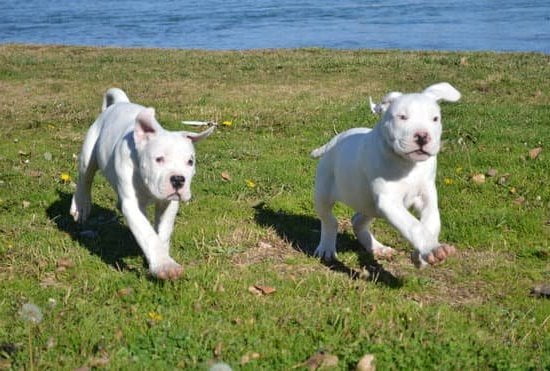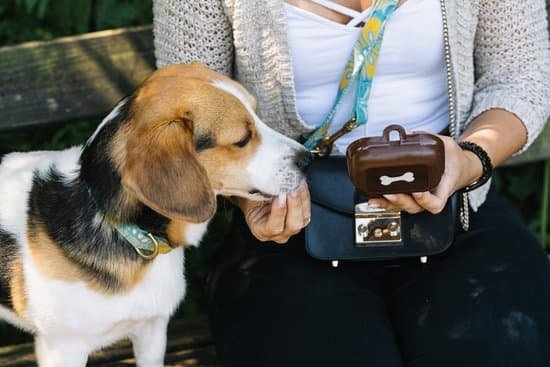Are you wondering how to train your dog to stop pooping inside? It can be a frustrating and messy problem for pet owners, but with the right approach, it is possible to teach your furry friend to do their business outdoors.
In this article, we will delve into the reasons why dogs may poop inside, provide house training basics, share tips for potty training puppies, offer guidance on creating a designated potty area outside, address potential medical issues, explore the effectiveness of positive reinforcement, and discuss managing accidents and seeking professional help when necessary.
Understanding why dogs poop inside is the first step in addressing this behavior. It is essential to explore the underlying reasons behind this unwanted habit before implementing any training techniques. By establishing a routine and being consistent in your approach, you can effectively communicate to your dog where they should go potty. This article will also provide valuable insight into house training basics and explain the importance of patience and persistence throughout the process.
For puppy owners, we will offer specific tips and techniques for potty training young dogs. Additionally, we will discuss the importance of creating a designated potty area outside and how it can contribute to successful house training.
We will also touch upon how medical issues can play a role in indoor accidents and provide guidance on using positive reinforcement as an effective training method. Ultimately, our goal is to equip dog owners with practical strategies for preventing indoor accidents and promoting good potty habits in their pets.
House Training Basics
House training your dog is an essential part of teaching them to stop pooping inside. One of the key aspects of house training is establishing a routine for your dog and maintaining consistency in your approach.
Establishing a Routine
Dogs thrive on routine, so it’s important to establish a consistent schedule for feeding, bathroom breaks, and exercise. By feeding your dog at the same times each day, you can predict when they will need to eliminate waste. Take your dog outside first thing in the morning, after meals, and before bedtime to reinforce where they should be relieving themselves.
The Importance of Consistency
Consistency is crucial when it comes to house training your dog. Use the same door to go in and out of the house, take them to the same spot in the yard for bathroom breaks, and use the same command each time they eliminate. When accidents happen inside, it’s important not to scold or punish your dog. Instead, focus on reinforcing the desired behavior by consistently rewarding them when they go potty outside.
By establishing a routine and maintaining consistency in your approach, you can effectively train your dog to stop pooping inside. Remember that patience and persistence are key when it comes to house training, and with time and effort, you can help your furry friend understand where they should be doing their business.
Potty Training for Puppies
Potty training a puppy can be a challenging but essential part of dog ownership. It is important to understand that puppies have small bladders and may not have full control over their bodily functions. However, with patience and consistency, it is possible to train your puppy to go outside for their potty needs.
One of the most important aspects of potty training for puppies is establishing a routine. This means taking your puppy outside at regular intervals, such as first thing in the morning, after meals, before bedtime, and after playtime. By doing this consistently, you can teach your puppy that outside is the appropriate place to relieve themselves.
In addition to establishing a routine, it is crucial to use positive reinforcement when potty training your puppy. When your puppy goes outside to pee or poop, be sure to praise them enthusiastically and offer them a treat as a reward.
This helps your puppy understand that going outside is the desired behavior. On the other hand, if accidents happen inside, it’s important not to scold or punish the puppy as it can create fear or anxiety around the potty training process.
Overall, potty training for puppies requires patience, consistency, and positive reinforcement. It’s important to remember that accidents will happen during the learning process and it’s essential not to get discouraged. With time and effort, you can successfully train your dog to stop pooping inside by using these tips and techniques effectively.
Creating a Designated Potty Area
The first step in creating a designated potty area is choosing the right location. It should be easily accessible to your dog and away from high-traffic areas of your yard. You can use fencing or landscaping to create a secluded space that provides privacy for your pet. It’s important to pick a spot that is easy for you to clean up and maintain as well.
Once you have chosen the location, it’s time to establish the bathroom area. You can use gravel, mulch, or artificial turf as a surface for your dog to go on. Introduce your dog to this area and encourage them to use it by taking them there frequently, especially after meals and naps. Always praise and reward your dog when they use the designated potty area, reinforcing the behavior you want to see.
By following these steps and being consistent with training, you can effectively teach your dog where to go potty outside, reducing indoor accidents and fostering good habits.
| Key Points | Details |
|---|---|
| Location | Choose an accessible and secluded spot in your yard. |
| Bathroom Area | Use gravel, mulch, or artificial turf as a surface. |
| Consistency | Take your dog to the designated potty area frequently and offer praise and rewards for using it. |
Addressing Medical Issues
It’s important to understand that sometimes, a dog pooping inside the house may not necessarily be due to behavioral issues or lack of training. In some cases, medical problems can lead to indoor accidents. Here are some common health issues that can contribute to this behavior:
- Digestive problems: Dogs with digestive issues such as diarrhea or constipation may have a harder time controlling their bowel movements, leading to accidents indoors.
- Urinary tract infections: This common health issue can cause dogs to have frequent and urgent urination, which can result in accidents inside the house.
- Incontinence: Elderly dogs or those with certain medical conditions may experience incontinence, making it difficult for them to hold their pee or poop until they can go outside.
If you notice your dog having frequent accidents indoors, it’s crucial to rule out any underlying medical issues by consulting with a veterinarian. Once any potential health problems have been addressed, you can continue working on training your dog to stop pooping inside.
In addition to seeking veterinary care, it’s important to continue with consistent potty training methods and positive reinforcement techniques. With patience and persistence, even dogs with medical issues can be successfully trained to do their business outside.
Remember that addressing medical issues is just one aspect of the overall process of training your dog. By being attentive to your pet’s health and implementing proper training techniques, you can help your furry friend overcome the habit of pooping inside the house.
Using Positive Reinforcement
Positive reinforcement is a powerful tool when it comes to training your dog to stop pooping inside. This technique involves rewarding your dog for desired behavior, such as going to the bathroom outside. When your dog receives a reward, such as a treat or verbal praise, they are more likely to repeat the behavior that earned them the reward.
When using positive reinforcement to stop your dog from pooping inside, it’s important to be consistent and timely with the rewards. As soon as you catch your dog in the act of going to the bathroom outside, immediately give them a treat and praise them enthusiastically. This helps your dog understand exactly what they are being rewarded for.
In addition to treats, verbal praise and affection can also be effective forms of positive reinforcement. Dogs are social animals and thrive on their owner’s approval and attention. By showering your dog with praise when they go to the bathroom outside, you are letting them know that they have done something right and reinforcing the desired behavior.
| Positive Reinforcement Technique | Effectiveness |
|---|---|
| Rewards and Treats | Highly effective in reinforcing desired behavior |
| Verbal Praise | Effective for creating positive associations with outdoor bathroom behavior |
| Affectionate Attention | Can strengthen the bond between owner and dog while reinforcing good behavior |
Managing Accidents
Accidents are a natural part of the house training process, but it’s important to effectively manage them in order to prevent future incidents. Understanding how to clean up messes and address potential triggers for indoor accidents can help in the overall effort to train your dog to stop pooping inside.
Effective Cleaning Techniques
When accidents happen, it’s crucial to clean up the mess thoroughly in order to eliminate any lingering scent that may attract your dog back to the same spot. Use a cleaning solution specifically designed for pet stains and odors, and be sure to follow the instructions on the product label. Consider using a black light to detect any urine spots that may not be visible to the naked eye.
Preventing Future Incidents
In addition to proper cleaning, it’s important to identify and address any underlying causes for your dog’s indoor accidents. This could include inadequate potty breaks, anxiety or stress, or a medical issue. By addressing these factors, you can help prevent future incidents from occurring.
Consistency Is Key
Consistency in your training methods and routines is essential in preventing future accidents. Be diligent in providing regular potty breaks for your dog, especially after meals and playtime. Additionally, continue using positive reinforcement when your dog successfully goes outside, helping them understand that this behavior earns praise and rewards.
By implementing these tips for managing accidents and preventing future incidents, you can make significant strides in training your dog to stop pooping inside. Remember that patience and persistence are key throughout this process, and with time and consistent effort, you can successfully house train your furry companion.
Seeking Professional Help
Training your dog to stop pooping inside can be a challenging task, especially if you have already tried various techniques without success. If your efforts to house train your dog have been to no avail, it might be time to consider seeking professional help. Here are some signs that indicate the need for enlisting the assistance of a professional dog trainer:
- Repeated accidents: If your dog continues to poop inside despite consistent training and efforts to establish a routine, it may be a sign that there are underlying behavioral issues that need to be addressed.
- Aggressive behavior: Sometimes, dogs may exhibit aggressive behavior when reprimanded for pooping inside. A professional dog trainer can assess and address any aggression-related issues during the house training process.
- Lack of progress: If you have been following house training basics and using positive reinforcement techniques without seeing any improvement, it could be beneficial to consult with a professional who has experience in addressing these challenges.
When considering enlisting the assistance of a professional dog trainer, it’s important to research and find someone with a track record of success in dealing with house training issues. A qualified trainer can provide personalized guidance based on your dog’s specific needs and behaviors. They can also offer additional support in areas such as crate training, behavior modification, and creating a tailored potty training plan.
In addition to seeking help from a professional dog trainer, it’s essential for pet owners not to lose patience or become discouraged during this process. With persistence and the right guidance, most dogs can learn how to stop pooping inside and adapt to proper outdoor potty habits.
Conclusion
In conclusion, training your dog to stop pooping inside requires a thorough understanding of the reasons behind this behavior. It is essential to establish a consistent routine and use positive reinforcement to encourage your dog to go outside.
Addressing any medical issues that may contribute to indoor accidents is also crucial, as well as creating a designated potty area outdoors. Remember that patience and persistence are key in this process, and managing accidents with a calm and proactive attitude will contribute greatly to the success of your training efforts.
Consistency is paramount when it comes to house training your dog. By sticking to a routine and providing clear guidance, your furry friend will eventually learn where they should do their business. Using positive reinforcement techniques such as treats and praise will motivate them to continue displaying the desired behavior. Remember, it may take time for your dog to fully grasp the concept of going outside, so be patient and continue providing encouragement.
If despite your best efforts, your dog continues to have accidents indoors or if you encounter resistance in the training process, don’t hesitate to seek professional help. A professional dog trainer can provide expert guidance tailored to your specific situation, ultimately making the transition from indoor accidents to outdoor success much smoother for both you and your canine companion.
With dedication and perseverance, you can train your dog to stop pooping inside and enjoy a clean and mess-free environment in your home.
Frequently Asked Questions
How Do You Discipline a Dog for Pooping in the House?
Discipline must be done immediately after the dog has pooped in the house for it to be effective. This involves using a firm voice and body language to communicate disapproval, but without resorting to physical punishment.
How Do I Stop My Dog From Toileting in the House?
To prevent your dog from toileting inside, establish a consistent routine for outdoor potty breaks, and reward them for going outside. Supervise them closely indoors and use positive reinforcement when they do their business outside.
Why Does My Dog Poop Inside After Being Outside?
There are several reasons why a dog may poop inside after being outside, such as not being fully house-trained, experiencing anxiety or stress, medical issues like digestive problems or parasites, or simply not having enough time outside to finish their business. It is important to address these underlying reasons in order to curb this behavior.

Welcome to the blog! I am a professional dog trainer and have been working with dogs for many years. In this blog, I will be discussing various topics related to dog training, including tips, tricks, and advice. I hope you find this information helpful and informative. Thanks for reading!

